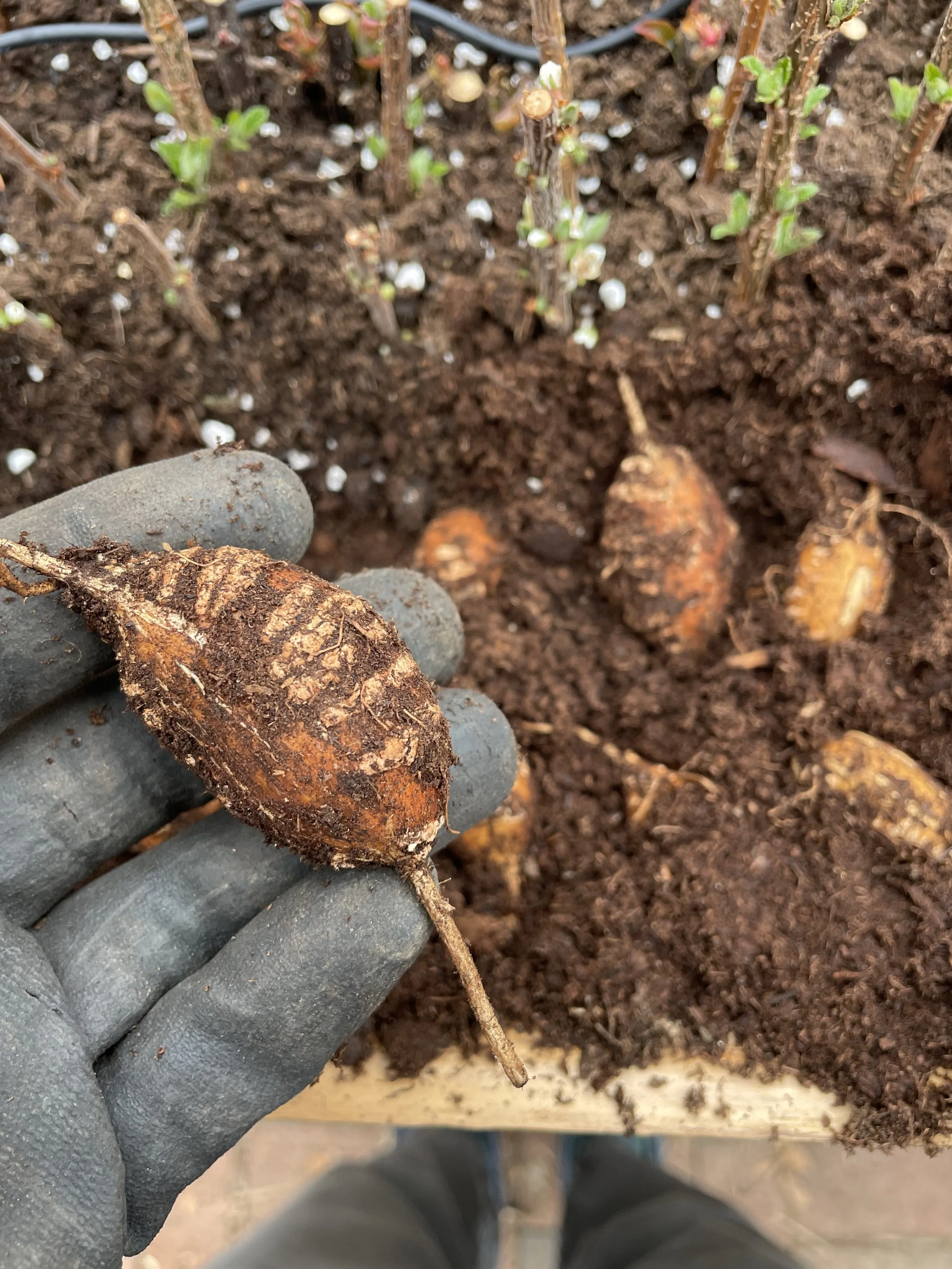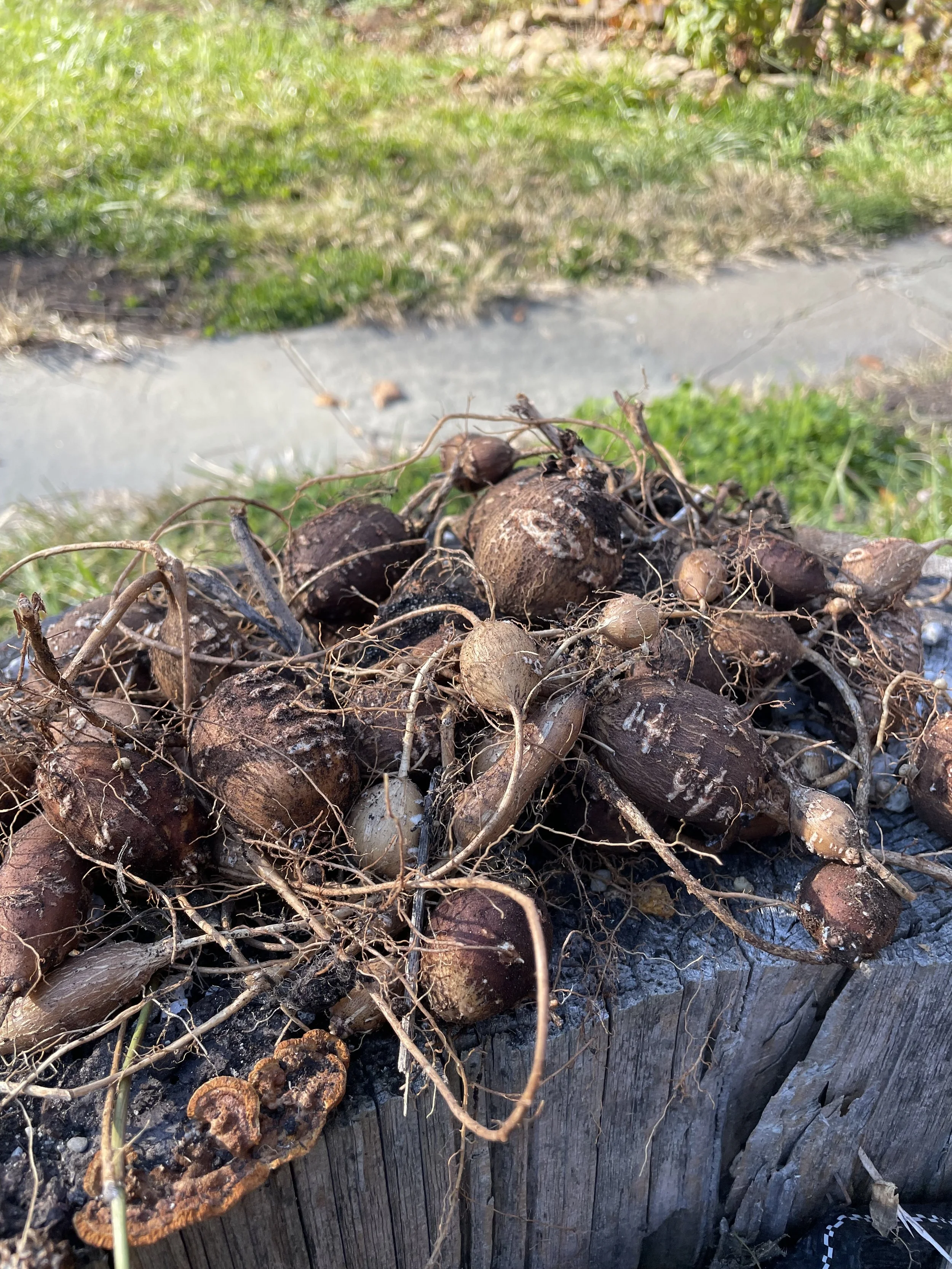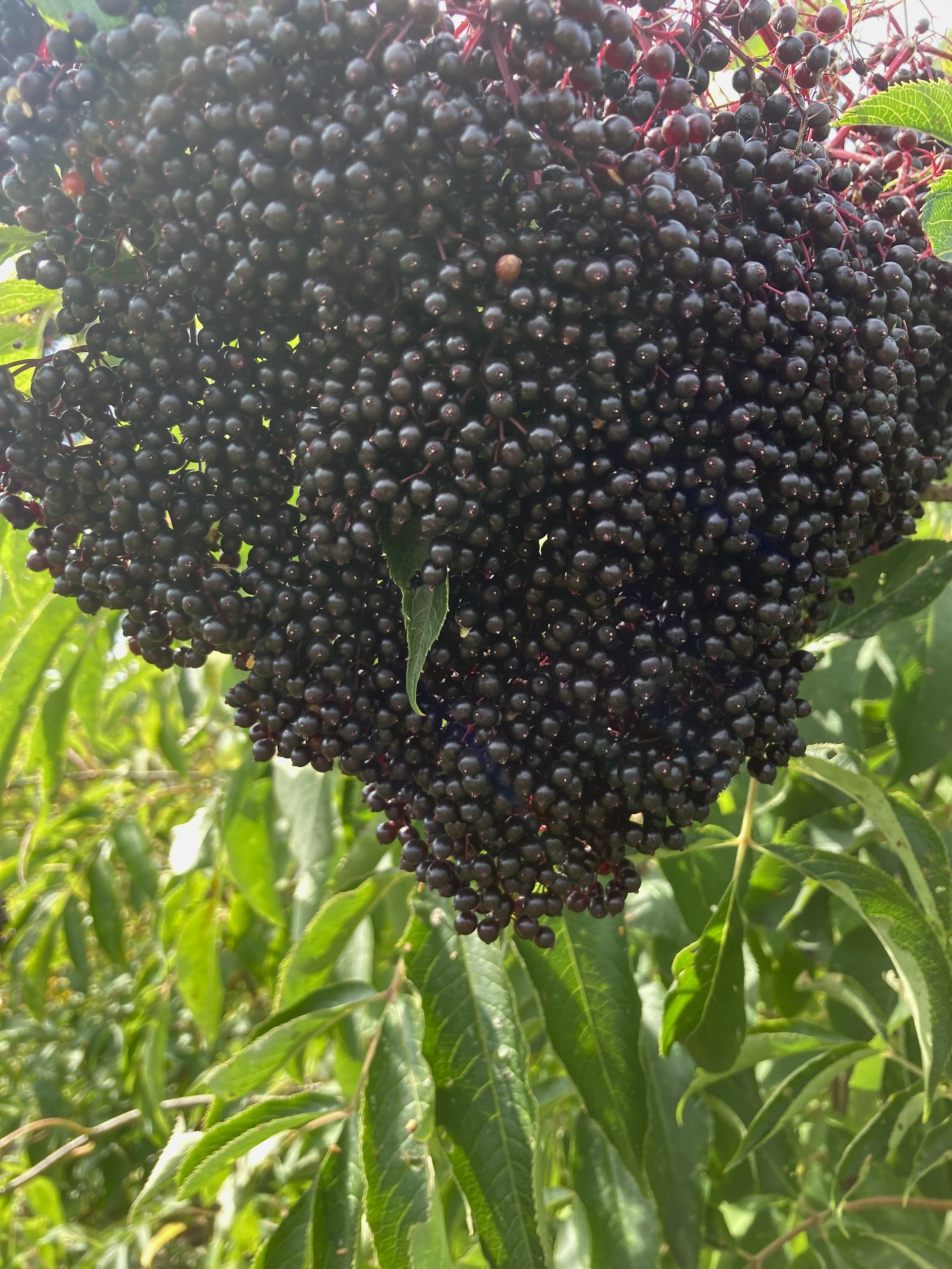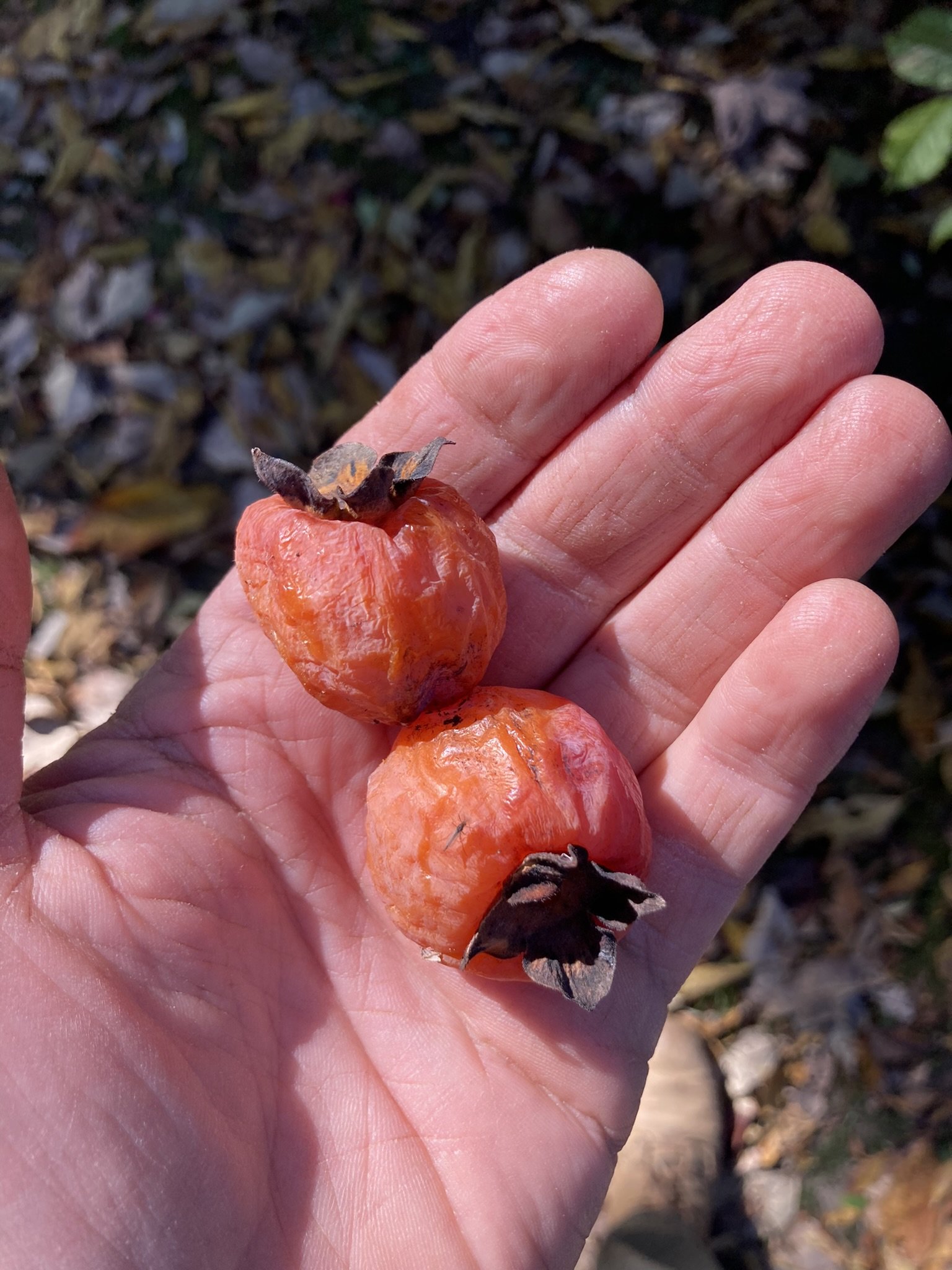 Image 1 of 2
Image 1 of 2

 Image 2 of 2
Image 2 of 2



American Groundnut - 'LSU' Improved Cultivar (Tuber)
(Apios americana)
American Groundnut is a surprisingly little known, native, edible tuber. A member of the legume family, this was a widely consumed and dispersed crop among indigenous populations, so much so that many places were named after it! Groundnuts are easy to grow, perennial, hardy, adaptable, attractive and fix nitrogen. Nutty and high in protein, these potato-like tubers grow along shallow strands of roots, and can be harvested after 1-2 seasons. Those left in the ground will overwinter and resprout, or tubers can be stored and planted in the spring like potatoes. Makes a great companion plant for gardens and food forests, as its shallow roots fix nitrogen and are not nearly as aggressive as something like sunchokes. Above ground vines are delicate and will climb on nearby fences and trees, producing puffy brown-maroon flower clusters. Flowering is more common in warmer areas with longer seasons. LSU Groundnut is an improved cultivar that produces much larger tubers than would be found in wild populations.
Taste Profile: Nutty, starchy, potato, peanut, bean
Hardiness zone: 3-10
Light: Full sun to part shade
Soil: Rich, moist, organic soil with pH 5.5-7
Mature height: 6-12’ vines
Spacing: 1-2’
Pollination: Self-fertile
Planting tips: The ideal location to plant is shaded or mulched ground that will stay cool and moist, but allow vines to grow in full sun for maximum tuber production. Growing on a trellis will improve access to sunlight and greatly increase yield. For an early start, tubers can be pre-sprouted like potatoes indoors or in flats in a greenhouse and then planted out. Plant 2-3” deep.
Growing tips: Smaller, fingerling-sized tubers can be harvested the first fall, after vines die back. For larger, potato-like tubers it is suggested to wait two full growing seasons before harvest.
We are unable to ship this product outside the contiguous US or to California.
All winter orders are for dormant, bare root plants and will be shipped or available for pick up in March-April 2026.
(Apios americana)
American Groundnut is a surprisingly little known, native, edible tuber. A member of the legume family, this was a widely consumed and dispersed crop among indigenous populations, so much so that many places were named after it! Groundnuts are easy to grow, perennial, hardy, adaptable, attractive and fix nitrogen. Nutty and high in protein, these potato-like tubers grow along shallow strands of roots, and can be harvested after 1-2 seasons. Those left in the ground will overwinter and resprout, or tubers can be stored and planted in the spring like potatoes. Makes a great companion plant for gardens and food forests, as its shallow roots fix nitrogen and are not nearly as aggressive as something like sunchokes. Above ground vines are delicate and will climb on nearby fences and trees, producing puffy brown-maroon flower clusters. Flowering is more common in warmer areas with longer seasons. LSU Groundnut is an improved cultivar that produces much larger tubers than would be found in wild populations.
Taste Profile: Nutty, starchy, potato, peanut, bean
Hardiness zone: 3-10
Light: Full sun to part shade
Soil: Rich, moist, organic soil with pH 5.5-7
Mature height: 6-12’ vines
Spacing: 1-2’
Pollination: Self-fertile
Planting tips: The ideal location to plant is shaded or mulched ground that will stay cool and moist, but allow vines to grow in full sun for maximum tuber production. Growing on a trellis will improve access to sunlight and greatly increase yield. For an early start, tubers can be pre-sprouted like potatoes indoors or in flats in a greenhouse and then planted out. Plant 2-3” deep.
Growing tips: Smaller, fingerling-sized tubers can be harvested the first fall, after vines die back. For larger, potato-like tubers it is suggested to wait two full growing seasons before harvest.
We are unable to ship this product outside the contiguous US or to California.
All winter orders are for dormant, bare root plants and will be shipped or available for pick up in March-April 2026.













